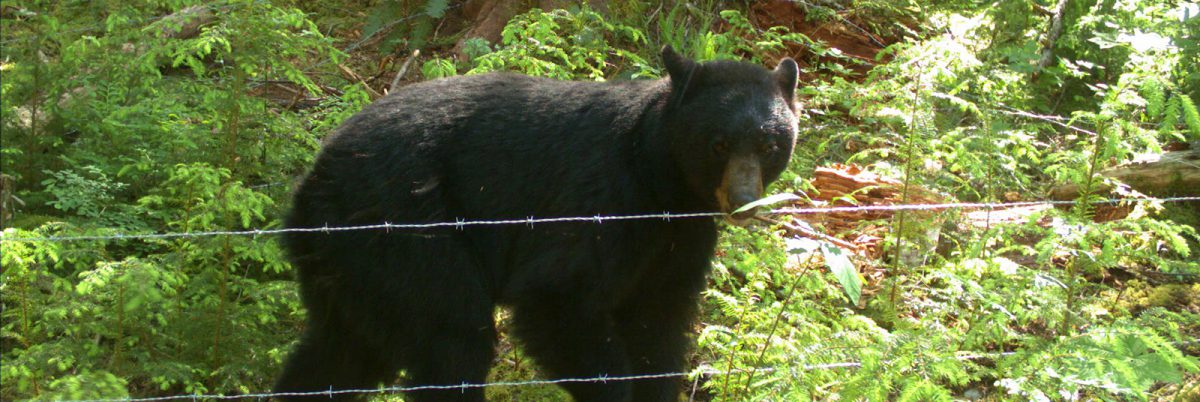Published: September 15, 2021
By Amanda Summers – Wildlife Biologist
On a crisp June morning, Wildlife Program staff, Jeff Tatro, Gary Tatro, Jennifer Sevigny and Amanda Summers head out in teams to get to know the local black bears with the assistance of the Sauk-Suiattle Tribe’s Wildlife staff. Earlier this spring they spent time installing 36 hair snares, basically a barbwire fence with a bait pile in the middle.
10 days before hair collection day, the team baited the snares with aged cattle blood, fish oil and fruit lures (some smelling better than others) and walked away. The purpose of these snares is to attract bears and collect their hair when they rub against the barbed wire. Rubbing against the barb wire does not harm the animal and in fact can make for an enjoyable back scratch. The snares may also attract other mammals.
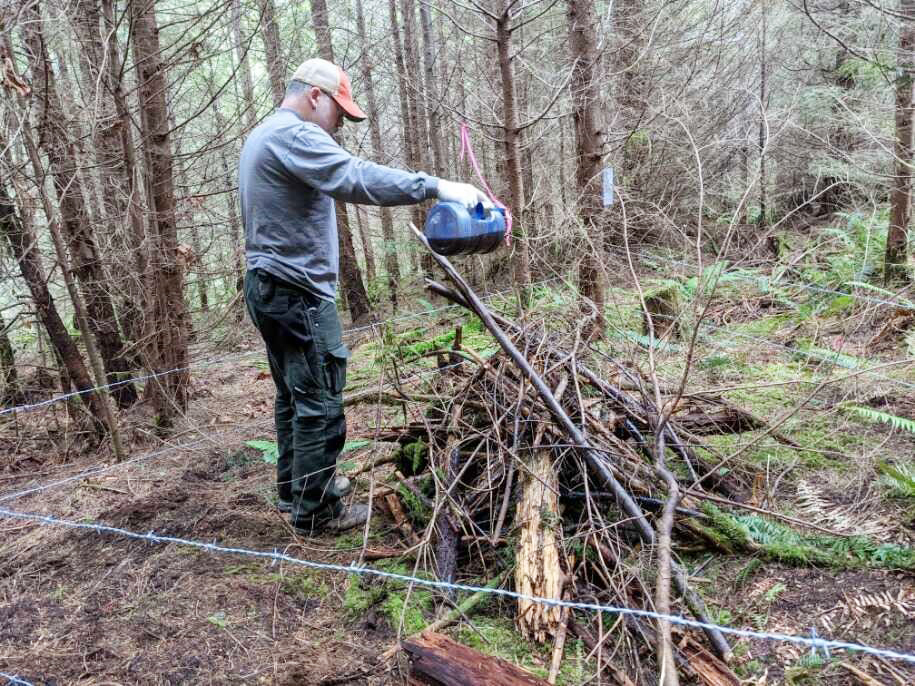
Genetic analysis will tell the team whether the hair left on the barbwire was a bear and if it was male or female. With this, Wildlife Staff will know how many individuals are living within an area. This information helps to inform harvest management because it can be used to calculate a population level for the study area.
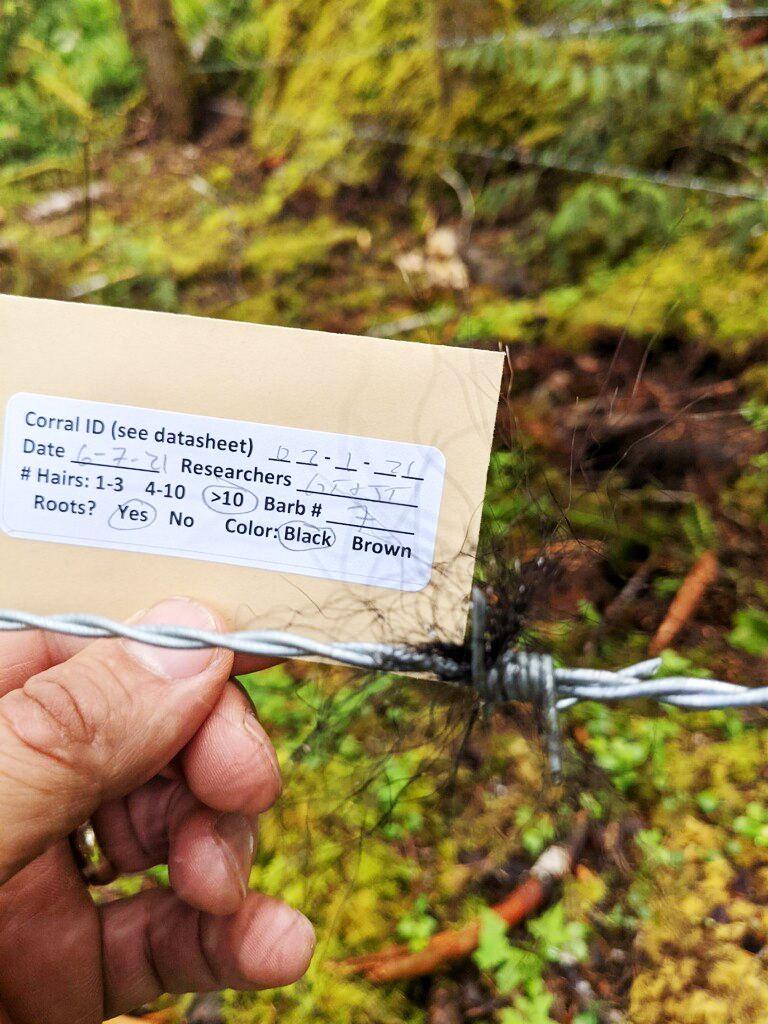
Using tweezers team members pry hair from individual barbs and place them into small envelopes to be sent to a genetics lab. After the first round of sampling 163 hair samples were collected, this does not mean that there are 163 bears in the study area. Many of the samples are likely from the same individual.
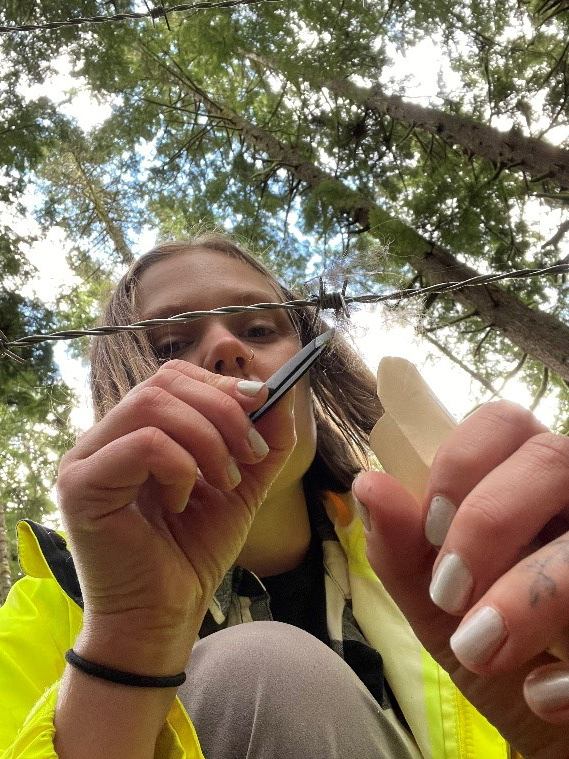
Calculating the local population will take three more hair collections. The data will be shared with Washington Department of Fish and Wildlife and the Sauk-Suiattle Tribe as they are project partners. “Understanding bear populations is important for our Tribal community for management reasons,” says Gary Tatro, “bears have an important place in our teachings, beliefs and in our diet. This project will provide insight on what our management objectives should be so that we can take care of the bear who has taken care of our people for so long.” Without adequate science we are not able to accomplish this.
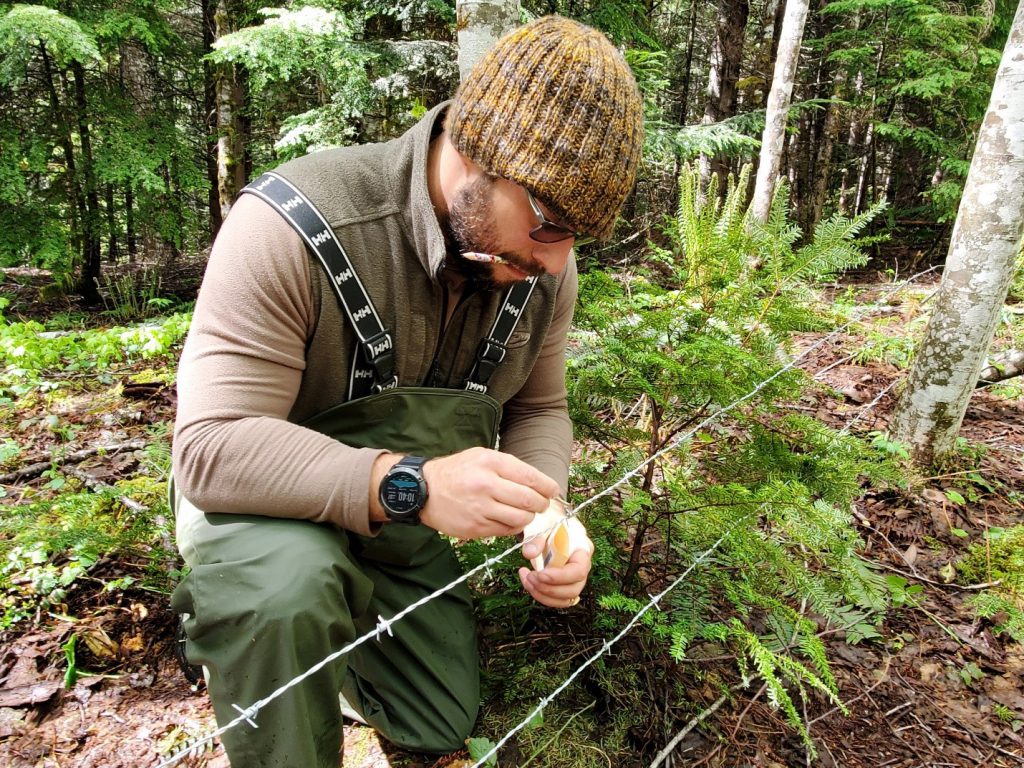
Jeff Tatro believes that knowing the black bear population is important so that the Tribe can set sustainable harvest levels and gather important demographic data (sows, boars, cubs). Collecting hair will improve the Tribes management and understanding of a Treaty Resource. In Washington State, black bear harvest levels were based on old data that included many assumptions as data collection methods were not as advanced as they are now, so Jeff feels it is important that the Tribe is helping to do something about that. While the project is pretty darn stinky (the bait!) Jeff appreciates that he gets his steps in and earns his weekly cinnamon roll.

